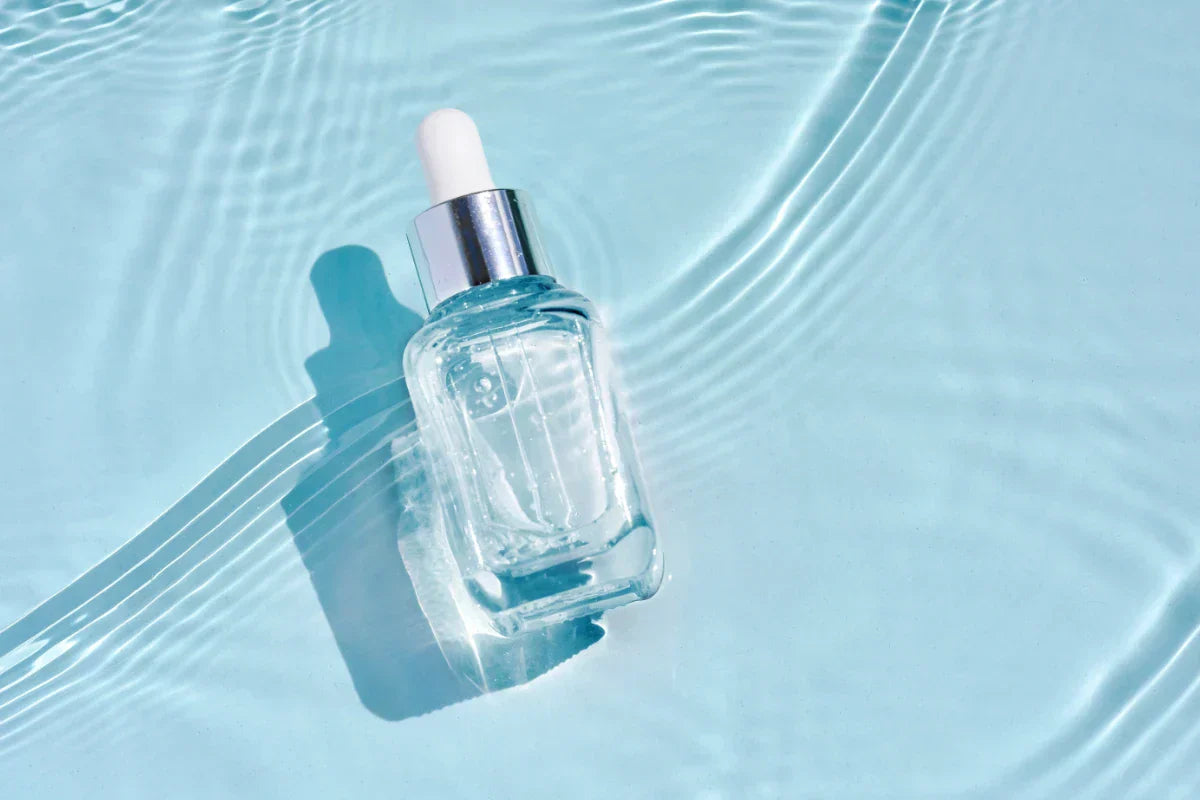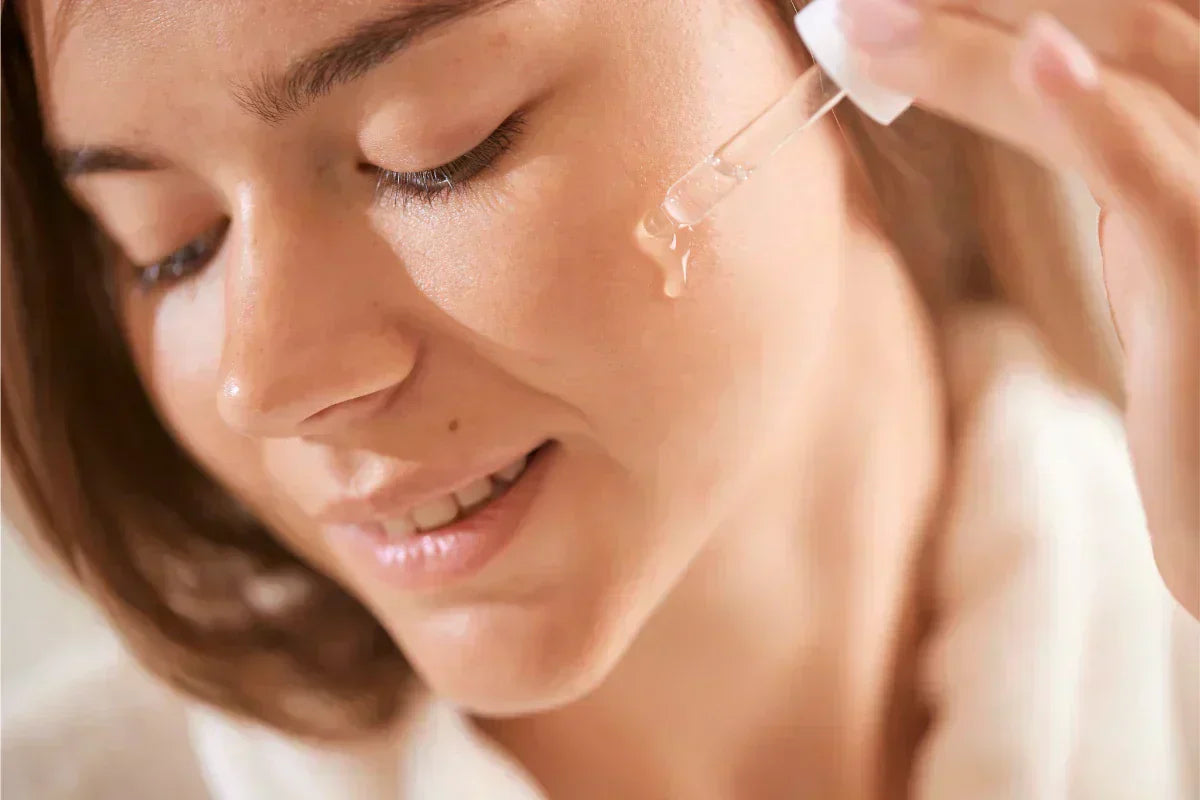Protecting your skin from the sun's harmful rays is essential for maintaining healthy, youthful skin. The lipid-coated Micronised Zinc Oxide is a modern mineral sunscreen ingredient that offers broad-spectrum protection against both UVA and UVB rays. Its unique formulation provides effective sun defense while being gentle on sensitive and acne-prone skin. This innovative ingredient helps prevent premature skin aging, sunburn, and skin cancer without leaving a heavy or white residue. In this article, we explore the benefits, mechanisms, and applications of micronised zinc oxide lipid coated in skin protection.
Introduction to Mineral Sunscreen
- Mineral sunscreen offers broad-spectrum protection against harmful UV rays, helping to prevent premature skin aging and skin cancer.
- Zinc oxide and titanium dioxide, the active ingredients in mineral sunscreens, create a physical barrier on the skin’s surface to block UVB and UVA rays. Zinc oxide is an inorganic, mineral-based compound that provides effective physical protection against UV rays.
- Mineral sunscreens are suitable for sensitive, dry, and combination skin, offering a gentle and effective way to protect against the sun’s harmful rays.
- Modern mineral sunscreen formulas are designed to feel light on the skin, blending seamlessly without leaving a heavy or white residue.
- Sun protection factor (SPF) is a crucial consideration when selecting a mineral sunscreen, as higher SPF values provide greater protection.
- Broad-spectrum sunscreen is essential for protecting against both UVA and UVB rays, which can lead to sunburn, premature aging, and skin cancer.

Types of Zinc Oxide
- Zinc oxide (ZnO) is a metal oxide used in mineral sunscreens to provide broad-spectrum protection against UV radiation.
- ZnO nanoparticles (ZnO-NP) are used in some sunscreens, offering improved transparency and cosmetic elegance. The average size of ZnO nanoparticles, as measured by TEM, is a key factor influencing their transparency and performance in sunscreen formulations. ZnO nanoparticles transmit and scatter the visible part of solar radiation, resulting in a more transparent appearance on the skin compared to larger particles.
- Coated zinc oxide, such as FLYCHEM’s Zincaptis™ (Micronised Zinc Oxide / Lipid Coated), provides enhanced stability and safety, reducing the risk of skin irritation. The type of coating applied to ZnO nanoparticles can significantly influence their penetration into skin layers and overall safety profile. Additionally, the interaction of zinc oxide compounds with the skin is affected by both the nanoparticles’ coating and their underlying chemistry.
- Uncoated zinc oxide is also effective, but may have a higher risk of skin irritation and instability.
- Titanium dioxide is another common ingredient in mineral sunscreens, often used in combination with zinc oxide.
Mechanism of Action of Lipid-Coated Micronised Zinc Oxide
Lipid-coated micronised zinc oxide is a cutting-edge mineral sunscreen ingredient designed to deliver superior sun protection while being gentle on the skin. With an average size of around 200 nanometers, these zinc oxide particles are coated with a layer of lipids, which helps them disperse evenly in sunscreen formulations and enhances their stability. When applied, the particles remain on the skin’s surface, forming a physical barrier that effectively scatters and reflects both UVA and UVB rays.
This broad-spectrum protection helps shield the skin from sunburn, premature skin aging, and the risk of skin cancer. The lipid coating not only enhances the texture and feel of the sunscreen, making it lightweight and less likely to leave a white cast, but also reduces the potential for irritation, making it ideal for sensitive skin, acne-prone skin, and combination skin types. By providing a gentle yet powerful defense against the sun's harmful rays, lipid-coated micronized zinc oxide is a standout active ingredient in modern mineral sunscreens.

Benefits of Zinc Oxide for Dry Skin
- Zinc oxide is gentle and non-irritating, making it an excellent choice for individuals with dry or sensitive skin.
- Mineral sunscreens containing zinc oxide can help to soothe and calm dry skin, reducing inflammation and irritation.
- Zinc oxide provides a physical barrier on the skin’s surface, helping to lock in moisture and protect against dryness.
- Fragrance-free and hypoallergenic mineral sunscreens are ideal for individuals with dry skin, as they reduce the risk of irritation and allergic reactions.
- Zinc oxide can also help to reduce the appearance of fine lines and wrinkles, giving the skin a smoother and more youthful appearance.
Sun Protection and Skin Health
Protecting your skin from the sun is one of the most important steps you can take to maintain its health and youthful appearance. Using a broad-spectrum sunscreen with a high sun protection factor (SPF) is crucial for shielding your skin from both UVA and UVB rays, which are responsible for sunburn, premature skin aging, and an increased risk of skin cancer.
Zinc oxide, a mineral active ingredient, forms a physical barrier on the skin that reflects and scatters the sun’s harmful rays, providing reliable protection for all skin types, including sensitive, combination, and acne-prone skin. Because zinc oxide sunscreens are fragrance-free and non-comedogenic, they are less likely to irritate or clog pores, making them ideal for daily use. Regular application of a broad-spectrum sunscreen not only helps prevent sunburn and skin cancer but also reduces the appearance of wrinkles and fine lines, keeping your skin looking smooth and protected against the visible signs of aging.
Comparison with Other Ingredients
- Chemical filters, such as oxybenzone and avobenzone, are commonly used in sunscreens, but may have a higher risk of skin irritation and instability.
- Mineral sunscreens, which contain zinc oxide and titanium dioxide, offer a safer and more effective alternative to chemical filters. These ingredients act as physical UV filters, forming a protective barrier on the skin to reflect and scatter UV rays.
- Zinc oxide provides broad-spectrum protection against UV radiation, making it an excellent choice for daily use. Both zinc oxide and titanium dioxide help protect the skin from the harmful effects of solar radiation, including skin damage and photoaging.
- Other ingredients, such as antioxidants and moisturizers, can be added to mineral sunscreens to enhance their benefits and provide additional skin protection.
- Mineral sunscreens are often more expensive than chemical sunscreens, but offer superior protection and safety.

Application and Usage
- Mineral sunscreens should be applied generously to all exposed skin, including the face, neck, hands, and body.
- Use finger tips to apply sunscreen, making sure to cover all areas evenly.
- Be sure to rub the sunscreen into the skin thoroughly to ensure even coverage and minimize white residue. Taking the time to rub it in helps achieve a streak-free, even finish suitable for all skin types.
- Reapply sunscreen every two hours, or immediately after swimming or sweating.
- Apply sunscreen 15-30 minutes before going outside, allowing it to absorb fully into the skin.
- Improper application may leave a white residue on the skin; proper rubbing can help reduce this effect.
- Use a broad-spectrum sunscreen with an SPF of at least 30, and reapply regularly to maintain protection.
Always read and follow the product label for specific application instructions and safety information. Mineral sunscreens are intended for external use only and should not be ingested.
Safety and Absorption
- Zinc oxide is generally considered safe and non-toxic, with a low risk of skin irritation and allergic reactions.
- The percutaneous absorption of zinc oxide is minimal, thereby reducing the risk of systemic toxicity. Most studies show that ZnO nanoparticles do not penetrate beyond the superficial layers of the skin. Contact between nanoparticles and the skin is mainly limited to the outermost layers, which reduces the risk of systemic absorption. The skin barrier plays a crucial role in preventing foreign molecules, including nanoparticles, from entering deeper skin layers.
- Coated zinc oxide, such as FLYCHEM’s Zincaptis™, provides enhanced safety and stability, reducing the risk of skin irritation and instability.
- Mineral sunscreens containing zinc oxide are suitable for use on sensitive, dry, and combination skin types.
- Zinc oxide is also used in topical medicine for skin conditions such as diaper rash and minor irritations, and is considered safe for external application.
- Zinc oxide can help reduce the risk of skin cancer and premature skin aging, making it an essential ingredient in daily sun protection.

Water and Sweat Resistance
- Water and sweat resistance are crucial considerations when selecting a mineral sunscreen, particularly for outdoor activities.
- Look for products labeled as “water-resistant” or “sweat-resistant,” and reapply them regularly to maintain protection.
- Mineral sunscreens containing zinc oxide can provide water and sweat resistance, making them an excellent choice for outdoor activities.
- Apply sunscreen generously and reapply regularly, even when swimming or sweating.
- Choose products that are oil-free and non-comedogenic to reduce the risk of clogged pores and skin irritation.
Environmental Impact of Mineral Sunscreens
Mineral sunscreens, featuring zinc oxide and titanium dioxide as their active ingredients, are increasingly recognized for their lower environmental impact compared to chemical sunscreens. Unlike chemical filters such as oxybenzone and octinoxate, which have been linked to coral reef damage and water pollution, mineral sunscreens use inorganic compounds that do not penetrate the skin or disrupt marine ecosystems.
Zinc oxide and titanium dioxide remain on the skin’s surface, providing effective sun protection without leaching harmful chemicals into the environment. While the manufacturing and potential runoff of these minerals can still have some ecological effects, mineral sunscreens are generally considered a safer choice for both people and the planet.
Concerns about nanoparticles have been addressed by research showing that these compounds do not penetrate deeply into the skin or accumulate in aquatic life. By choosing mineral sunscreens and using them responsibly, consumers can help protect their skin and contribute to the preservation of marine environments.
Regulatory Status and Global Approvals
The approval and regulation of mineral sunscreens, including those containing zinc oxide and titanium dioxide, vary globally to ensure consumer safety and product efficacy. In the United States, the Food and Drug Administration (FDA) classifies sunscreens as over-the-counter (OTC) drugs, requiring clear labeling of the Sun Protection Factor (SPF) and broad-spectrum claims.
The European Union enforces its own Cosmetics Regulation, mandating rigorous safety assessments for all sunscreen products. Australia, Canada, and many other countries also have strict guidelines for the use of mineral active ingredients in sunscreens, including standards for purity and particle size.
Both zinc oxide and titanium dioxide are widely approved for use in sunscreens, provided they meet these regulatory requirements. This global framework ensures that mineral sunscreens offer reliable protection against harmful UV rays, giving consumers confidence in the safety and effectiveness of the products they choose for sun protection.
Additional Benefits of Mineral Sunscreen
Mineral sunscreens do more than just protect your skin from the sun. Formulated with zinc oxide and titanium dioxide, these products can help soothe sensitive skin, calm irritation, and provide much-needed hydration. Zinc oxide’s natural anti-inflammatory properties make it especially beneficial for those with skin conditions like acne or rosacea, as it helps reduce redness and inflammation.
Unlike chemical filters, mineral sunscreens are often free from dyes and harsh additives, making them a gentle choice for even the most sensitive skin types. Additionally, by supporting the skin’s natural barrier, mineral sunscreens help lock in moisture and prevent dehydration, which can minimize the appearance of fine lines and wrinkles. Choosing a mineral sunscreen means you’re not only protecting your skin from the sun but also supporting its overall health and resilience.
Product Options and Availability
These mineral sunscreens, featuring zinc oxide and titanium dioxide, are readily available online, at pharmacies, and in specialty skincare stores. When selecting a sunscreen, look for labels that indicate broad spectrum, high SPF, and water resistance to ensure you’re getting the best protection. Whether you have oily, dry, or combination skin, there’s a mineral sunscreen designed to keep your skin safe from the sun’s rays without feeling heavy or greasy.

Cost and Value Comparison
When comparing mineral sunscreens to their chemical counterparts, price is often a key consideration. Mineral sunscreens, which use zinc oxide and titanium dioxide as active ingredients, typically cost more due to the higher expense of these minerals and the advanced formulation techniques required to ensure even application and broad-spectrum protection. However, the value of mineral sunscreens extends beyond their price tag.
They offer gentle, non-irritating sun protection that is ideal for sensitive skin, helps prevent premature skin aging, and reduces the risk of skin cancer by effectively blocking both UVA and UVB rays. Additionally, mineral sunscreens are often preferred by those seeking environmentally friendly and reef-safe options. While the initial investment may be higher, the long-term benefits for skin health and the environment make mineral sunscreens a worthwhile choice for many consumers. Ultimately, selecting the right sunscreen comes down to balancing cost, skin type, and personal values regarding health and environmental impact.
Customer Reviews and Ratings
- Customer reviews and ratings can provide valuable insights into the effectiveness and safety of mineral sunscreens.
- Look for products with high customer satisfaction ratings, and read reviews from other customers to get a sense of the product’s benefits and drawbacks.
- Consider the ingredients, SPF, and broad-spectrum protection when evaluating customer reviews and ratings.
- Be aware of potential biases and misinformation in customer reviews, and consult with a healthcare professional if you have any concerns.
- Check the overall rating and number of reviews to get a comprehensive understanding of the product’s performance.
Conclusion
In summary, prioritizing sun protection is crucial for maintaining healthy, youthful-looking skin. Using a broad-spectrum mineral sunscreen that contains zinc oxide and titanium dioxide is one of the most effective ways to protect against premature skin aging and reduce the risk of skin cancer. With so many product options available, it’s easy to find a mineral sunscreen that fits your skin type and lifestyle.
Remember to apply a generous amount, reapply regularly, and combine sunscreen use with other protective measures like seeking shade and wearing protective clothing. By making sun protection a daily habit and choosing high-quality mineral sunscreens, you can keep your skin protected and radiant for years to come.

Frequently Asked Questions (FAQ) on Lipid Coated Micronised Zinc Oxide
What is micronised zinc oxide lipid-coated, and how does it work?
It’s a mineral UV filter with lipid-coated particles that reflect and scatter UVA/UVB rays. The coating enhances spreadability, stability, and skin comfort.
Is it suitable for sensitive or acne-prone skin?
Yes, it's non-comedogenic, non-irritating, and ideal for sensitive, dry, and acne-prone skin types.
Does it leave a white cast on the skin?
Micronised particles and lipid coating reduce white cast, offering a more transparent, elegant finish.
How does it compare to chemical sunscreen filters?
Unlike chemical filters, it forms a physical barrier and has lower risks of irritation and hormone disruption.
Is lipid-coated zinc oxide safe for daily use?
Yes, studies show minimal skin absorption and high safety for regular external use.
Is lipid-coated zinc oxide reef-safe and environmentally friendly?
Yes, mineral sunscreens with zinc oxide are reef-safe and less harmful to marine life than chemical sunscreens.
How often should I reapply sunscreen with zinc oxide?
Reapply every 2 hours or immediately after swimming, sweating, or towel-drying for consistent protection.














